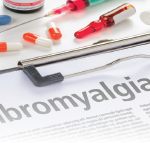 Physicians diagnose benign joint hypermobility (BJH) syndrome in individuals with musculoskeletal symptoms who also have excessive joint laxity. In particular, adolescents with functional gastrointestinal (GI) disorders are often also diagnosed with joint hypermobility, as well as fibromyalgia. This finding has led some experts to suggest that functional GI disorders and BJH may share an underlying pathophysiology. Therefore, they recommend that individuals with complex functional GI disorders should be screened for joint hypermobility and fibromyalgia, as well as co-morbid symptoms, such as sleep disturbances, migraines and autonomic dysfunction.1 Thus far, however, studies into the role of autonomic dysfunction in BJH have suggested that although postural orthostatic tachycardia syndrome (POTS) is common in adolescents with functional GI disorders, it’s not common in children with hypermobility. These findings have left physicians puzzled as to the relationship between joint hypermobility and autonomic dysfunction.
Physicians diagnose benign joint hypermobility (BJH) syndrome in individuals with musculoskeletal symptoms who also have excessive joint laxity. In particular, adolescents with functional gastrointestinal (GI) disorders are often also diagnosed with joint hypermobility, as well as fibromyalgia. This finding has led some experts to suggest that functional GI disorders and BJH may share an underlying pathophysiology. Therefore, they recommend that individuals with complex functional GI disorders should be screened for joint hypermobility and fibromyalgia, as well as co-morbid symptoms, such as sleep disturbances, migraines and autonomic dysfunction.1 Thus far, however, studies into the role of autonomic dysfunction in BJH have suggested that although postural orthostatic tachycardia syndrome (POTS) is common in adolescents with functional GI disorders, it’s not common in children with hypermobility. These findings have left physicians puzzled as to the relationship between joint hypermobility and autonomic dysfunction.
Recently, researchers have tried to dig deeper into the unresolved issue of the role of BJH in the development of autonomic symptoms and comorbidities. To answer this question, Gisela Chelimsky, MD, from the Medical College of Wisconsin in Milwaukee, and colleagues compared children with chronic functional pain disorders and BJH with a similar cohort of patients with chronic functional pain disorders in the absence of BJH. The direct comparison allowed the investigators to determine if patients with BJH have more autonomic dysfunction than patients who present with similar complaints but do not have BJH. The retrospective chart review included a total of 21 female patients seen in a pediatric neurogastroenterology and autonomic clinic. Eleven of the subjects had BJH, as confirmed by genetics consultation and/or meeting the classic Brighton criteria. The authors note that, in general, patients who are referred to this clinic have a variety of autonomic complaints, migraines, nausea and fatigue, as well as functional GI disorders.
Both groups had a similar age of symptom onset: 15.6 years for those with BJH and 15.4 years for those without BJH. Most of the children in both groups presented with migraine or GI complaints as their chronic functional pain. Other complaints included chronic fatigue, lightheadedness, dizziness, fainting more than three times in their lifetimes and delayed onset of sleep. None of the patients had fibromyalgia as diagnosed by greater than 10 tender points. All told, the total number of co-morbid symptoms did not differ between the two groups.
The investigators evaluated the patients for tilt-table diagnoses of POTS, syncope, orthostatic intolerance symptoms that did not meet the criteria of POTS, orthostatic hypotension, baseline heart rate, peak heart rate in first 10 minutes of head-up tilt and sudomotor index. They then quantified the autonomic testing results using a composite autonomic severity score. The researchers found that neither the individual measurements nor the composite autonomic severity score differed between the two cohorts.

